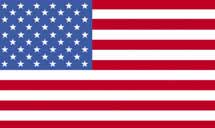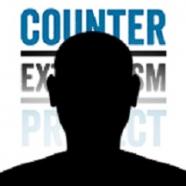Overview
Abu Mustafa al-Sheibani is the founder of the Sheibani Network, an Iraqi militia supported by and ideologically aligned with Iran’s Islamic Revolutionary Guard Corps (IRGC). He later helped found another pro-IRGC Iraqi militia, Kata’ib Sayyid al Shuhada (KSS).Caleb Weiss, “Iraqi Shia Militia ‘Willing to Send Fighters to Yemen,’” Long War Journal, July 9, 2018, https://www.longwarjournal.org/archives/2018/07/iraqi-shia-militia-willing-to-send-fighters-to-yemen.php. Sheibani is allegedly played a central role in the creation of Iranian-backed Shiite militias Asaib Ahl al-Haq (AAH) and Kata’ib Hezbollah (KH) in the early 2000s.Phillip Smyth, “Hizballah Cavalcade: Kata’ib Sayyid al-Shuhada: Another Supplier of Iraqi Shia Fighters in Syria,” Jihadology, June 3, 2013, https://jihadology.net/2013/06/03/hizballah-cavalcade-kataib-sayyid-al-shuhada-another-supplier-of-iraqi-shia-fighters-in-syria/. On January 9, 2008, the U.S. Treasury Department designated Sheibani “for threatening the peace and stability of Iraq and the Government of Iraq.”“Treasury Designates Individuals, Entity Fueling Iraqi Insurgency,” U.S. Department of the Treasury, January 9, 2008, https://www.treasury.gov/press-center/press-releases/Pages/hp759.aspx.
Sheibani has a long history of fighting alongside Iran. In the late 1980s, he reportedly fought against Saddam Hussein as a member of the IRGC-Quds Force—a special branch of the IRGC tasked with achieving sensitive missions beyond Iran’s borders.“Part 2: Pro-Iran Militias in Iraq,” Wilson Center, April 27, 2018, https://www.wilsoncenter.org/article/part-2-pro-iran-militias-iraq. Afterward, Sheibani joined the Badr Organization, becoming its leader in the late 1990s.Matthew Levitt and Philip Smyth, “Kataib al-Imam Ali: Portrait of an Iraqi Shiite Militant Group Fighting ISIS,” Washington Institute for Near East Policy, January 5, 2015, https://www.washingtoninstitute.org/policy-analysis/view/kataib-al-imam-ali-portrait-of-an-iraqi-shiite-militant-group-fighting-isis. In 2003, Sheibani left the Badr Organization and founded the Sheibani Network.Michael Eisenstadt, Michael Knights, and Ahmed Ali, Iran’s Influence in Iraq, Washington Institute for Near East Policy, April 2011, page 23, https://www.washingtoninstitute.org/uploads/Documents/pubs/PolicyFocus111.pdf. This move was directed by the IRGC, which began to directly support the new militia with weapons and funding.“Treasury Designates Individuals, Entity Fueling Iraqi Insurgency,” U.S. Department of the Treasury, January 8, 2008, https://www.treasury.gov/press-center/press-releases/Pages/hp759.aspx. The Sheibani Network was responsible for making and distributing explosively formed penetrator (EFP) roadside bombs and Katyusha rockets which were used to attack coalition and Iraqi forces.Michael Eisenstadt, Michael Knights, and Ahmed Ali, Iran’s Influence in Iraq, Washington Institute for Near East Policy, April 2011, page 23, https://www.washingtoninstitute.org/uploads/Documents/pubs/PolicyFocus111.pdf; “Treasury Designates Individuals, Entity Fueling Iraqi Insurgency,” U.S. Department of the Treasury, January 8, 2008, https://www.treasury.gov/press-center/press-releases/Pages/hp759.aspx. Beginning in January 2005, the Sheibani Network directly supplied Jaish al-Mahdi, the Badr Organization, and AAH with advanced explosives from Iran.Marisa Cochrane Sullivan, “Iran's Hard Power Influence in Iraq,” AEI Iran Tracker, April 10, 2009, https://web.archive.org/web/20141116121150/http://www.irantracker.org/military-activities/irans-hard-power-influence-iraq; Marisa Cochrane, “The Fragmentation of the Sadrist Movement,” Iraq Report 12, Institute for the Study of War, January 2009, page 20-21, http://www.understandingwar.org/sites/default/files/Iraq%20Report%2012%20Sadrist%20Movement%20Fragmentation.pdf. In the mid-2000s, Sheibani conducted an assassination campaign against local Iraqi police and government officials.“Treasury Designates Individuals, Entity Fueling Iraqi Insurgency,” U.S. Department of the Treasury, January 8, 2008, https://www.treasury.gov/press-center/press-releases/Pages/hp759.aspx. During this time, Sheibani and his fighters reportedly received weapons training and advice from Hezbollah.“Iraq: Return of Sheibani's killer squads,” United Press International, September 30, 2010, https://www.upi.com/Top_News/Special/2010/09/30/Iraq-Return-of-Sheibanis-killer-squads/36301285859253/?ur3=1.
Sheibani spent much of the 2000s in Tehran, Iran, but reportedly returned to Iraq in 2010 and joined AAH.“Treasury Designates Individuals, Entity Fueling Iraqi Insurgency,” U.S. Department of the Treasury, January 8, 2008, https://www.treasury.gov/press-center/press-releases/Pages/hp759.aspx; Michael Eisenstadt, Michael Knights, and Ahmed Ali, Iran’s Influence in Iraq, Washington Institute for Near East Policy, April 2011, page 10 and 23, https://www.washingtoninstitute.org/uploads/Documents/pubs/PolicyFocus111.pdf; Michael Knights, “The Evolution of Iran’s Special Groups in Iraq,” CTC Sentinel, November 2010, page 13, https://ctc.usma.edu/the-evolution-of-irans-special-groups-in-iraq/. Sheibani reportedly formed KSS in May 2013, with the support of the Badr Organization and KH.Philip Smyth, Hizballah Cavalcade: Kata’ib Sayyid al-Shuhada Emerges: Updates on the new Iraqi Shia Militia Supplying Fighters to Syria,” Jihadology, September 9, 2013, https://jihadology.net/2013/09/09/hizballah-cavalcade-kataib-sayyid-al-shuhada-emerges-updates-on-the-new-iraqi-shia-militia-supplying-fighters-to-syria/; Caleb Weiss, “Iraqi Shia Militia ‘Willing to Send Fighters to Yemen,’” Long War Journal, July 9, 2018, https://www.longwarjournal.org/archives/2018/07/iraqi-shia-militia-willing-to-send-fighters-to-yemen.php; Phillip Smyth, “Hizballah Cavalcade: Kata’ib Sayyid al-Shuhada: Another Supplier of Iraqi Shia Fighters in Syria,” Jihadology, June 3, 2013, https://jihadology.net/2013/09/09/hizballah-cavalcade-kataib-sayyid-al-shuhada-emerges-updates-on-the-new-iraqi-shia-militia-supplying-fighters-to-syria/.; “Part 2: Pro-Iran Militias in Iraq,” Wilson Center, April 27, 2018, https://www.wilsoncenter.org/article/part-2-pro-iran-militias-iraq. KSS claims to have sent 500 Iraqi militants to Syria in 2013, where it fought alongside the Syrian regime until at least 2015.Phillip Smyth, “Hizballah Cavalcade: Kata’ib Sayyid al-Shuhada Emerges: Updates on the New Iraqi Shia Militia Supplying Fighters to Syria,” Jihadology, September 9, 2013, https://jihadology.net/2013/09/09/hizballah-cavalcade-kataib-sayyid-al-shuhada-emerges-updates-on-the-new-iraqi-shia-militia-supplying-fighters-to-syria/; “Kata’ib Sayyid al-Shuhada,” Mapping Militant Organizations, Stanford University, last modified December 28, 2016, https://web.stanford.edu/group/mappingmilitants/cgi-bin/groups/view/629. In 2014, Sheibani stepped down as KSS leader to become an adviser to Iraqi Interior Minister Mohammed al-Ghabban, an official of the Badr Organization. Hashim Finyan Rahim al-Saraji, a.k.a. Abu Waala al Wa’eli, took over Sheibani’s role and continued to lead KSS as of January 2024.Michael Knights, “OFAC Designates Iraqi Militiamen (Part 2): KSS and Abu Ala al-Walai,” Washington Institute for Near East Policy, November 17, 2023, https://www.washingtoninstitute.org/policy-analysis/ofac-designates-iraqi-militiamen-part-2-kss-and-abu-ala-al-walai; “Terrorist Designations of Iran-aligned Militia Groups,” U.S. Department of State, November 17, 2023, https://www.state.gov/terrorist-designations-of-iran-aligned-militia-groups/.
KSS expanded its presence in Iraq after ISIS swept through the country in 2014.“Part 2: Pro-Iran Militias in Iraq,” Wilson Center, April 27, 2018, https://www.wilsoncenter.org/article/part-2-pro-iran-militias-iraq. The Iraqi militia currently operates as a member of the Popular Mobilization Forces (PMF), designated as Brigade 14.Aymenn Jawad al-Tamimi, “Hashd Brigade Numbers Index,” Aymenn Jawad al-Tamimi’s Blog, October 31, 2017, http://www.aymennjawad.org/2017/10/hashd-brigade-numbers-index. KSS works closely with other pro-IRGC PMF units and its commanders have met personally with former Quds Force commander Qasem Soleimani.Caleb Weiss, “Iranian general at the forefront of the Tikrit offensive,” Long War Journal, March 5, 2015, https://www.longwarjournal.org/archives/2015/03/iranian-general-at-the-forefront-of-the-tikrit-offensive.php. KSS receives funds from the Iraqi government as well as directly from Iran’s IRGC-Quds Force.“Kata’ib Sayyid al-Shuhada,” Mapping Militant Organizations, last modified December 28, 2016, https://web.stanford.edu/group/mappingmilitants/cgi-bin/groups/view/629.
Upon the start of the Hamas-Israel war in the Gaza Strip in October 2023, an umbrella group called the Islamic Resistance in Iraq (IRI) emerged. The grouping quickly launched dozens of attacks on U.S. forces and military bases across Iraq and Syria in retaliation for the United States’ stance on the Gaza crisis. The IRI is reportedly a coalition of all Iran-backed Shiite militias operating in Iraq. Among the groups included are Harakat Hezbollah al-Nujaba (HHN), KH, AAH, and KSS, as well as lesser-known militias such as Tashkil al-Waritheen.Hamdi Malik and Michael Knights, “Profile: The Islamic Resistance in Iraq,” Washington Institute for Near East Policy, October 21, 2023, https://www.washingtoninstitute.org/policy-analysis/profile-islamic-resistance-iraq. By January 2024, the militant coalition had carried out more than 100 attacks.Raya Jalabi and Felicia Schwartz, “US air strike kills commander of Iran-backed militia in Baghdad,” Financial Times, January 4, 2024, https://www.ft.com/content/6c70205d-e2b0-4f1a-bb19-835f7aa2b268.
Associated Groups
- Extremist entity
- Kata’ib Sayyid al Shuhada
- Read Threat Report
- Type(s) of Organization:
- Militia, political party, religious, social services provider, terrorist, transnational, violent
- Ideologies and Affiliations:
- Iranian-sponsored, Shiite, Jihadist, Khomeinist
- Position(s):
- Senior leader and commander
Kata’ib Sayyid al Shuhada (KSS) is an Iraqi militia that has fought in both Iraq and Syria and is closely connected to Iran’s Islamic Revolutionary Guard Corps (IRGC) and the Houthis.
History
United States

The U.S. Department of the Treasury designated Abu Mustafa Al-Sheibani a Specially Designated Global Terrorist on January 9, 2008 “for threatening the peace and stability of Iraq and the Government of Iraq.”“Treasury Designates Individuals, Entity Fueling Iraqi Insurgency,” U.S. Department of the Treasury, January 8, 2008, https://www.treasury.gov/press-center/press-releases/Pages/hp759.aspx.
